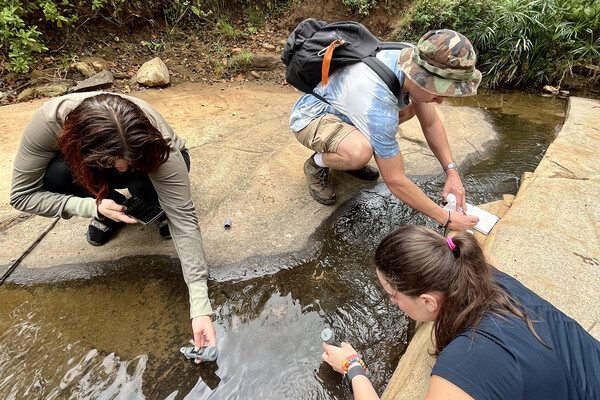
Griffin Pitt, right, works with two other student researchers to test the conductivity, total dissolved solids, salinity, and temperature of water below a sand dam in Kenya.
(Image: Courtesy of Griffin Pitt)
Online visitors who spend even a few minutes rummaging through the West Philadelphia Collaborative History Project (WPCH) are rewarded with a rich tapestry of stories. Among them: A West Philadelphia high school athletic field that hosted the 1934 championship series of the National Negro League; a popular amusement park located just outside Fairmount Park featuring a four-acre swimming pool with a sandy beach—and a whites-only policy; and three heroic Civil Rights icons—Paul Robeson, Malcolm X, and Martin Luther King, Jr.—who left formidable imprints on West Philadelphia.
This is just a sampling of the topics covered in the WPCH, a digital repository that includes neighborhood, institutional, and community histories, many of them in danger of being lost. Sponsored by Penn’s Graduate School of Education (Penn GSE), the WPCH provides a web-based home for these West Philadelphia stories, all vividly illustrated with photographs and maps.
The WPCH is a labor of love for John Puckett, a historian, emeritus professor at Penn GSE and long-time West Philadelphia resident. As project director, he oversees the website, contributes articles and works closely with collaborators, including West Philadelphia residents and local graduate students.
The WPCH launched in 2018, but according to Puckett, its seed was planted more than 30 years ago. “My Penn colleague Lee Benson, an emeritus professor of American history, tried to organize a Van Pelt Library repository for West Philadelphia history,” Puckett recalls.
“Like many good ideas that were floated at the time, this one failed to reach fruition for reasons that are clear now in hindsight. In 1994, the dawn of the internet, we could not imagine the warp-speed advances in computer hardware and software technologies that would make it possible to build a website like the WPCH.”
Read more at Penn GSE News.
From Penn GSE

Griffin Pitt, right, works with two other student researchers to test the conductivity, total dissolved solids, salinity, and temperature of water below a sand dam in Kenya.
(Image: Courtesy of Griffin Pitt)

Image: Andriy Onufriyenko via Getty Images

nocred

Provost John L. Jackson Jr.
nocred